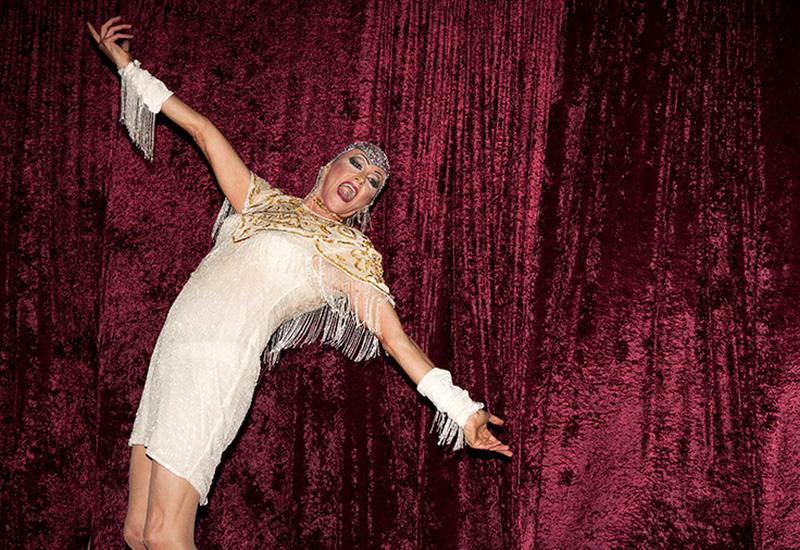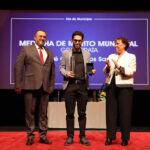The Algarve is a refuge for many artists who find inspiration in its beauty, tranquillity and magic. Last year, Portugal gained another kindred spirit in this ever-growing community. From a small Italian village, Mario Marchiaro fought against prejudice and familial obligations while overcoming enormous obstacles. In doing so found his raison d’être, embracing wearing a pair of trousers as well as a sparkly frock and high heels.
Mario Marchiaro, aka Chandalier, is a professional theatrical illusionist who has performed worldwide. Mario and his husband Ken, a renowned artist and photographer, moved to Lagos from San Diego last year. Happily settled and feeling at home, Mario plans for Chandalier to perform regularly in this area to raise money for the Tomorrow magazine charity, TACT.
Mario Marchiaro was born in 1960 in Valpone, a small village in Italy with only 200 inhabitants. “Everyone knew each other’s business in our village,” Mario declares. The middle child with an older brother and a younger sister, he grew up with a controlling father. “I developed empathy for women in early childhood and watching my father belittle my mother played a pivotal role in that.”
Mario’s parents were semi-professional ballroom dancers who competed locally. “I showed an affinity for music and dance, and at the age of eight, I asked my father if I could learn an instrument,” he recalls. “There was a barber in the village who was very musical, so my father arranged with him to teach me. I read music for two years using solfège exercises and only then did I progress to the accordion, a traditional instrument in my area.”
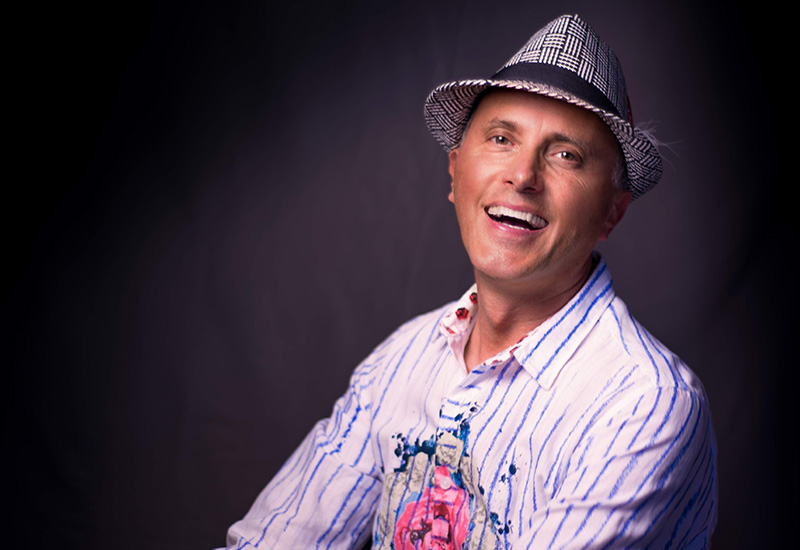
Mario was a natural musician. He quickly became adept, despite the instrument being larger than him! At age 10, he had his first experience performing, playing his accordion for the barber’s clients. “They loved me, and I adored the feeling of being an entertainer.” Over the next four years, having improved significantly, Mario begged his father to allow him to study music in Turin, Valpone’s closest big town.
“My father had different plans for me, though. He owned a car bodywork garage and intended that my siblings and I would leave school at 14 to work for him; my brother and I to work in the garage, and my sister to be the secretary,” remembers Mario. “In Italy, it’s normal for children to work in the family business, as it saves on wages. Pocket money for essentials is given to the children instead.”
Reluctantly and with no other alternative, Mario left school and followed his father’s wishes to train as an auto body painter. Continuing to practise the accordion became difficult as his hands grew damaged from work. It was especially tough in the winter when calluses formed because of the cold.
“My father, although not allowing me to continue my studies in music, was proud of my accordion playing. He often wanted me to perform for his friends, which I did, but there was inevitable friction between us. I was furious at him for obstructing my education and crushing my dreams.
Salt was rubbed deep into the wound by watching my friends go off to school and hearing their stories. One day, when I was 16, I said no to playing the accordion for my father’s friends, and I gave up the instrument forever.”
During these tumultuous teenage years, Mario was not only angry towards his father but also felt a growing awareness that he was not like most other boys. He developed a crush on a young lad, a fellow employee around his age. The feeling was reciprocated, and the two embarked on a long-term secret love affair while simultaneously dating girls.
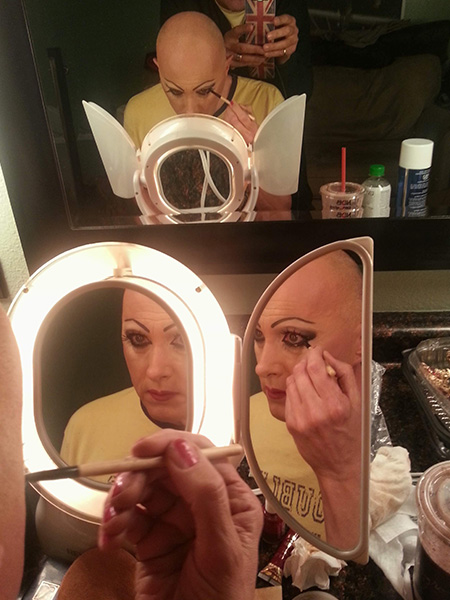
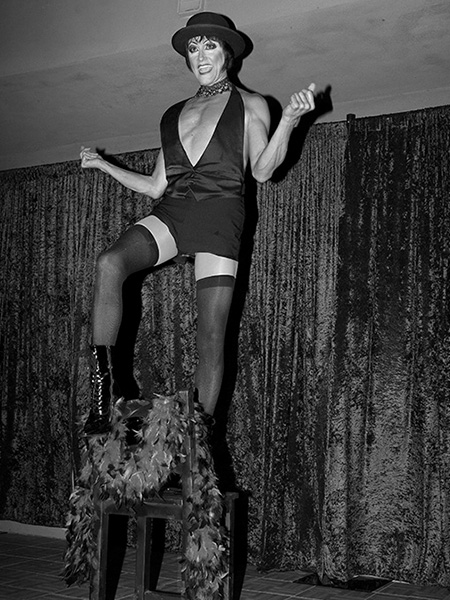
“Village life began to drive me crazy. I was naturally curious and felt thwarted by my restricted lifestyle. Meanwhile, I had become a valuable asset to my father’s business, and at 20 years old, I decided to come out of the closet to my family. I couldn’t cope with the secrecy anymore. It was the 1980s, and homosexuality was still considered a mental illness. My parents were distraught,” Mario recalls. Chillingly, he remembers that in a moment of confusion, his mother stated she would rather have a dead son than a gay son. “Her words had a significant impact on me. As she never repeated them and was a loving mother overall, I believe her response came from a place of utter shock.”
There was disharmony in the house, and at his very lowest point, Mario contemplated suicide. Pulling himself out of that dark place, he realised he had two options: run away or stay and endeavour to make his parents understand that he was still their son. He remained for two more years. When the relationship with his first lover ended, Mario fell in love with a radio DJ from a nearby town who helped him cope with his family’s disapproval and encouraged him to start evening dance classes.
In 1982, when Mario was 22 and realising his family would never accept his sexual orientation, he and his boyfriend left for Rome. “It was a big drama for my family, with weeping and wailing in true Italian style. After eight years of working for him, all my father gave me was an old car and the equivalent of 300 dollars! With such a measly contribution to my future, he was both assuming and hoping I would be home very soon,” Mario recounts.
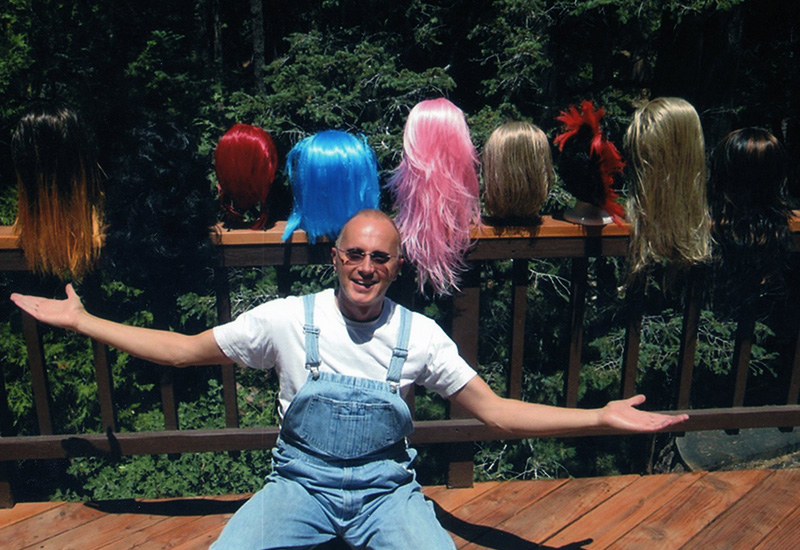
There was no looking back for Mario, though; he was unstoppable. During the day, he used his car bodywork skills to earn an income, while in the evenings, he attended ballet school, where he excelled. He was focused and determined to do well. After 18 months, he got his first professional work as a dancer in a troupe for television shows. Subsequently, his career took off and he did not stop dancing for years, quickly becoming a principal dancer in many shows.
“In 1989, cast in televised live theatre, I was suddenly famous and being photographed and interviewed for magazines. Now my parents were very proud of me and came to see my shows. They couldn’t grasp how I could earn money this way. How can I make money without getting dirty?!”
Mario had reached a highlight in his career. He never wanted to return to being part of the chorus. One day a friend who had bought the rights to an Italian translation of the American musical A Chorus Line offered Mario a key role. “This was a fantastic opportunity as it was Italy’s first big Broadway show. After three months of rehearsals, we toured the country doing 225 performances. It was a roaring success!”
Following this triumph, the talented Mario became a principal dancer in a Milan show, and yet again, he fell in love. This time it was with an American dancer. “I ended the last relationship, packed my things and, driven by love as always, I went to California with him,” he declares.
America massively broadened Mario’s horizons while his career soared to new heights. He combined dancing professionally with teaching and, in 1993, he moved to San Francisco. With his experience of many dancing styles, Mario acquired work on a show called Dance Time. “This was an amazing opportunity to tour America and to get a good perspective of the country. It was a fun time; a new life in a new country opened my eyes to fresh possibilities,” he remembers.
At 36, the hard-working Mario, who had been dancing professionally for 15 years, was tired. “I needed a break,” he explains. “At this time, I met Ken, now my husband, and it was love and fireworks at first sight. I knew immediately that this was the man I wanted to be with for the rest of my life, and luckily, he felt the same. I stopped dancing, and we started a photography business together.”
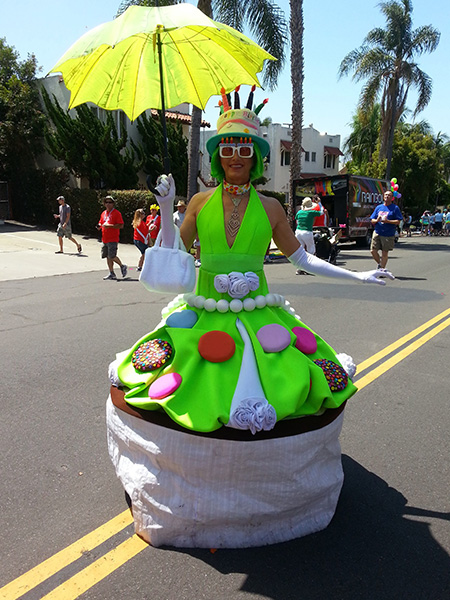
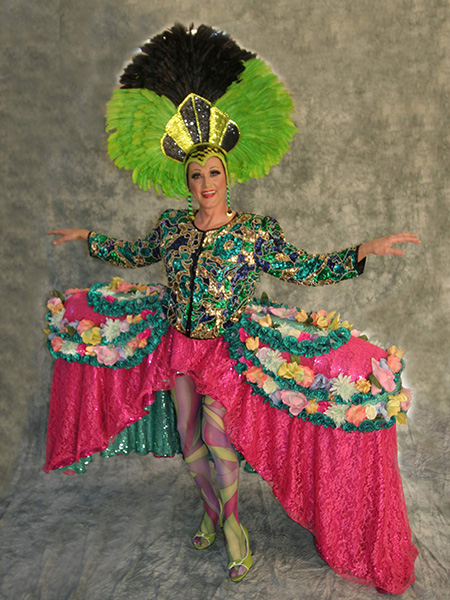
The happy couple moved to Palm Springs and opened an art gallery. Mario felt at peace at first with not performing on stage. “It felt as if I still my hand in acting though, with all the chitchat that comes with selling art!” he laughs.
One evening Mario and Ken attended an Aids charity show where several drag queens performed. Mario had seen drag before but had not given it much thought. This time though, he was mesmerised. He and Ken looked at each other, and they both knew that the show had rekindled Mario’s creative fire. “I didn’t realise how much I was missing performing until I saw this show. At 43, there was little chance of me getting any male dancing roles, but drag, I knew I could do that!” Thus, his alter ego Chandalier was born.
Palm Springs’ thrift shops benefit from the generosity of its many wealthy female residents. They are full of rich ladies’ glamorous frocks, shoes, wigs and accessories. “I had the most amazing time buying flamboyant, outrageous outfits that only a drag queen would wear,” he laughs. “My problem was applying makeup. I had never had to do my own before, and as Ken is an artist, initially, I asked him to do it. He also applied my false eyelashes until there came the point where using tough love, he said he would do it no more, and I had to face that fear on my own. Getting ready for a show gives me a much-needed transition time. When I sit in front of the mirror, I am Mario. As I apply makeup, a metamorphosis occurs. I gradually take on the persona and confidence of Chandalier, the performer, and steadily, bit by bit, I am transformed.”
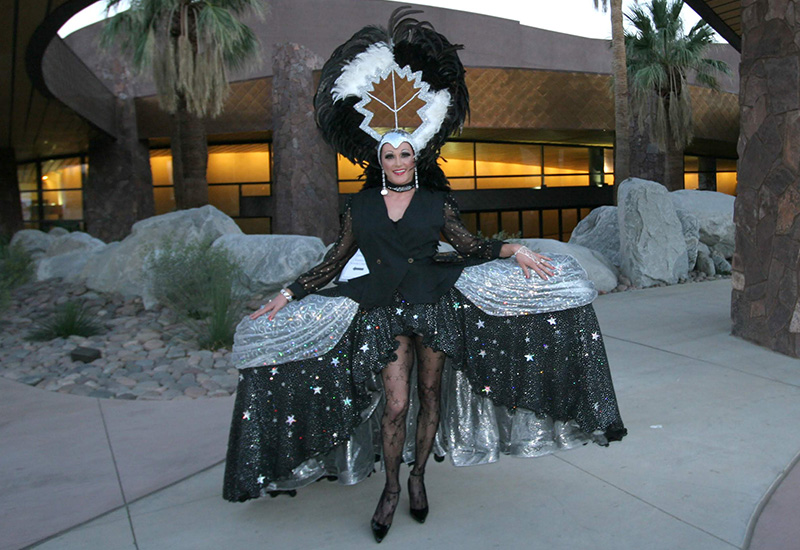
Mario started performing in Palm Springs, and he was sensational. “I incorporated my dancing skills into the shows, using kicks, flicks and cartwheels on stage,” he explains. “I adore dressing as a woman; embracing my feminine side allows me to feel empowered. I also love being a man and am at peace with my identity. I often change into men’s clothing during a show, but women’s clothes are simply more fun, with colour, extravagance and glitziness. The art of drag has given me an intimate understanding of the societal pressures on women to look beautiful. High heels, push-up bras, and false eyelashes can be terribly uncomfortable.”
While drag performers have historically been gay men, the community increasingly welcomes people of all identities. “Interestingly, the youth seem more playful with their gender expression – embracing their femininity and masculinity more readily. Some men tend to find that drag challenges the concept of their masculinity, especially when I reveal at the end of each show that I am a man,” Mario points out. “I have met and worked with hundreds of professional drag queens. We all love dressing up, entertaining and spreading joy. Drag can be anything from gut-bustingly hilarious to profoundly thought-provoking. I myself have seen grown men moved to tears. Each individual queen provides something unique and there’s something for everyone.”
In 2008, Mario and Ken created a show based on a comedic version of Mario’s life called I Didn’t Break a Leg. “We took my life story and embellished it theatrically. The choreography was difficult, with 13 costume changes. It became hugely successful, but when it came to an end, we decided we needed to go somewhere quieter, so we moved to San Diego,” Mario recalls.
Once settled in their new home, Mario began an agency that hired out drag queens for parties and events. He had no idea that it would be such a success. “Suddenly, everyone wanted drag,” he declares. “I was flown all over the world, not just America. I performed in Tokyo, Mexico, Mykonos, Stockholm, and numerous other places. The agency became so popular that I had to employ more queens.”
Just over a year ago, Ken and Mario began contemplating retiring early. They were both in their early 60s and ready to leave America’s political unrest behind them. Mario had always dreamed of returning to Europe, and Portugal, with its winning combination of gay rights and good weather, seemed a perfect choice. They arrived in Lagos just by chance and loved it. “Since Ken and I moved here, we keep discovering more positive aspects of life in the Algarve. Becoming vegan has been part of our spiritual journey and we have joined the lively Vegans Social Group.”
Chandalier has performed twice in the Algarve, and Mario, ever vibrant, plans to keep her onstage. “If my story can positively affect parents and encourage them to be loving, understanding and supportive of their children’s inner calling, then my life has more meaning. My intention as a retired performer is to dedicate my art and skills to educating and empowering and also, as I feel I have been lucky in life, it’s time now to give something back by generating money for people less fortunate than me.”
Did you know…
The word drag was thought to have originated during the age of Shakespearean theatre when the church prohibited women from performing onstage. Men played the female roles and complained that the heavy material of the dresses dragged behind them.
The History of Drag
Drag is a type of performative art that uses clothing, extravagant makeup and exotic accessories to transform someone into an entertainer. Humans have probably been wearing clothes associated with the opposite sex for as long as people have existed. Drag’s theatre history traces back to Ancient Greece, where women were considered inferior, and men played their roles. The word drag was thought to have originated during the age of Shakespearean theatre when the church prohibited women from performing onstage. Men played their characters and complained that the heavy material of the dresses dragged behind them.
It is thought that drag kings (mostly women who dress in masculine clothes) have an even longer history than queens, documented as far back as 617 CE in China and popping up in operas, theatre and films from then on.
In Japan in the 16th century, women were banned from performing Kabuki, a form of titillating entertainment, so men had to take the parts of women. Modern Kabuki now allows women to perform.
The first pantomime dame to appear in the UK was Mother Goose in The Golden Egg in 1806. Pantomime dames have remained traditional and well-loved in pantomimes until today. The most famous cross-gender theatre casting in Victorian times was Peter Pan, who was always played by a woman. With the development of vaudeville theatre (1890–1930), two types of drag queens appeared: wrench players who appeared in racist blackface minstrel shows and prima donnas who sang and danced.
In the first half of the 1950s, drag became increasingly linked to the LGBTQ+ movement, and since homosexuality was criminalised, drag theatre shows on Broadway moved to underground clubs. Police continually raided these clubs until drag queens arranged a series of protests in 1969 known as the Stonewall Riots. They escalated into a battle for civil rights which led to the LGBTQ+ community and, therefore, drag becoming more accepted.
In the late 20th century, Ballroom Culture arose in America. Black and Latino drag queens organised pageants in opposition to the racism in the drag queen community. These balls became very popular.
Films have featured actors in drag as far back as the Marx Brothers, Laurel and Hardy and Charlie Chaplin. It has continued appearing in many films, going between comedy as in Billy Wilder’s Some Like It Hot and terror in Alfred Hitchcock’s Psycho.
During the second half of the last century, drag was regularly included in Warhol/Morrissey films and Harris Glenn Milstead’s character, Divine, performed in films as a woman. In the 1980s, The Rocky Horror Picture Show was released, and Pink Flamingo and Dustin Hoffman became a soap queen in Tootsie. Barbara Streisand plays a man studying the Torah in Yentl, Robin Williams played a woman in Mrs Doubtfire and of course, there is the famous Priscilla Queen of the Desert.
Danny La Rue was famous for his female celebrity impersonations and theatrical performances, and for many decades he was a household name.
In the music scene, David Bowie made cross-dressing a focal point, and many other musicians played with cross-dressing, including Boy George, Annie Lennox, Queen and Lady Gaga.
RuPaul brought drag from a niche interest to a broader audience with his reality competition series RuPaul’s Drag Race, which began in 2009 and of which 100 episodes have been released. RuPaul is known as the most famous drag queen in the world.
